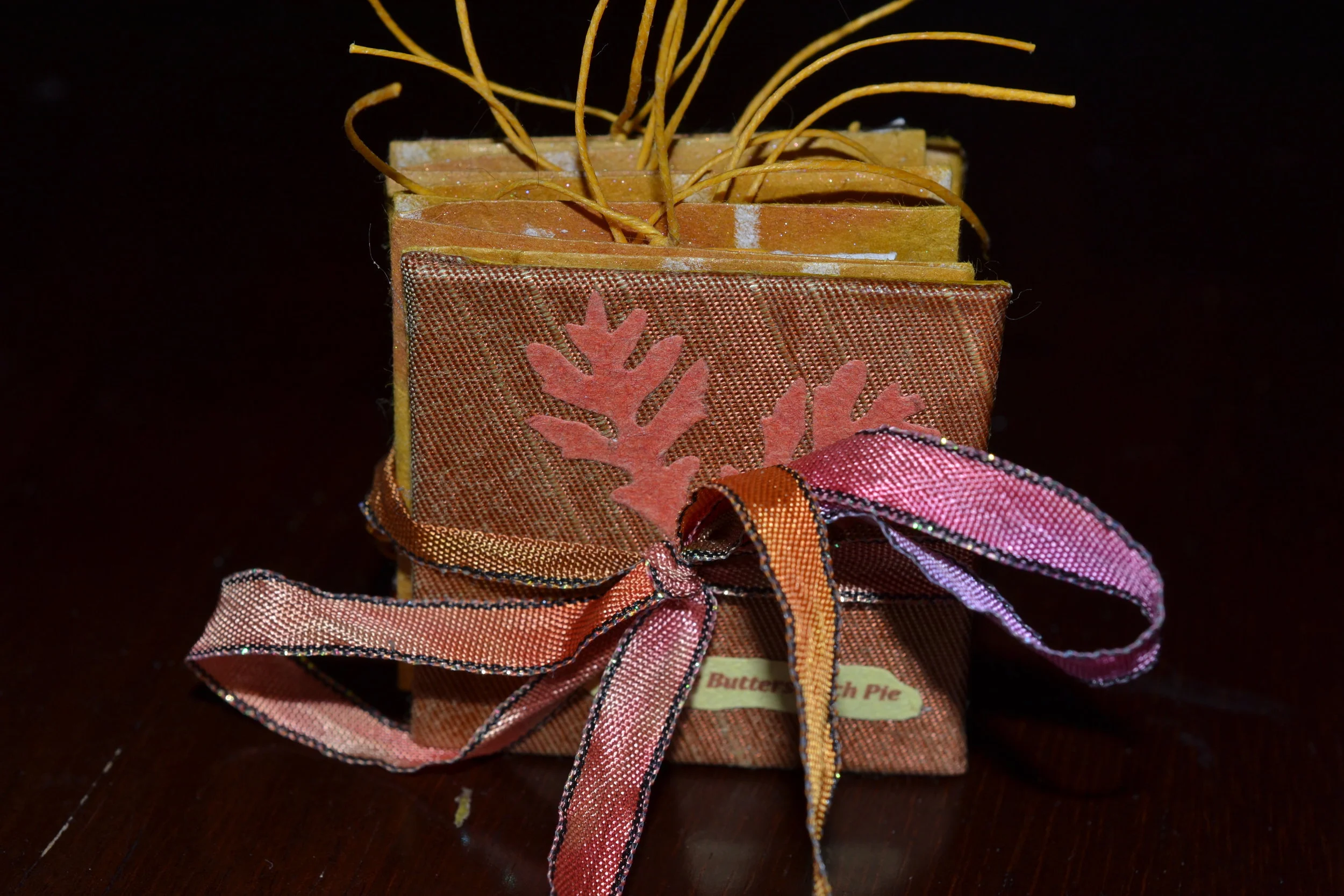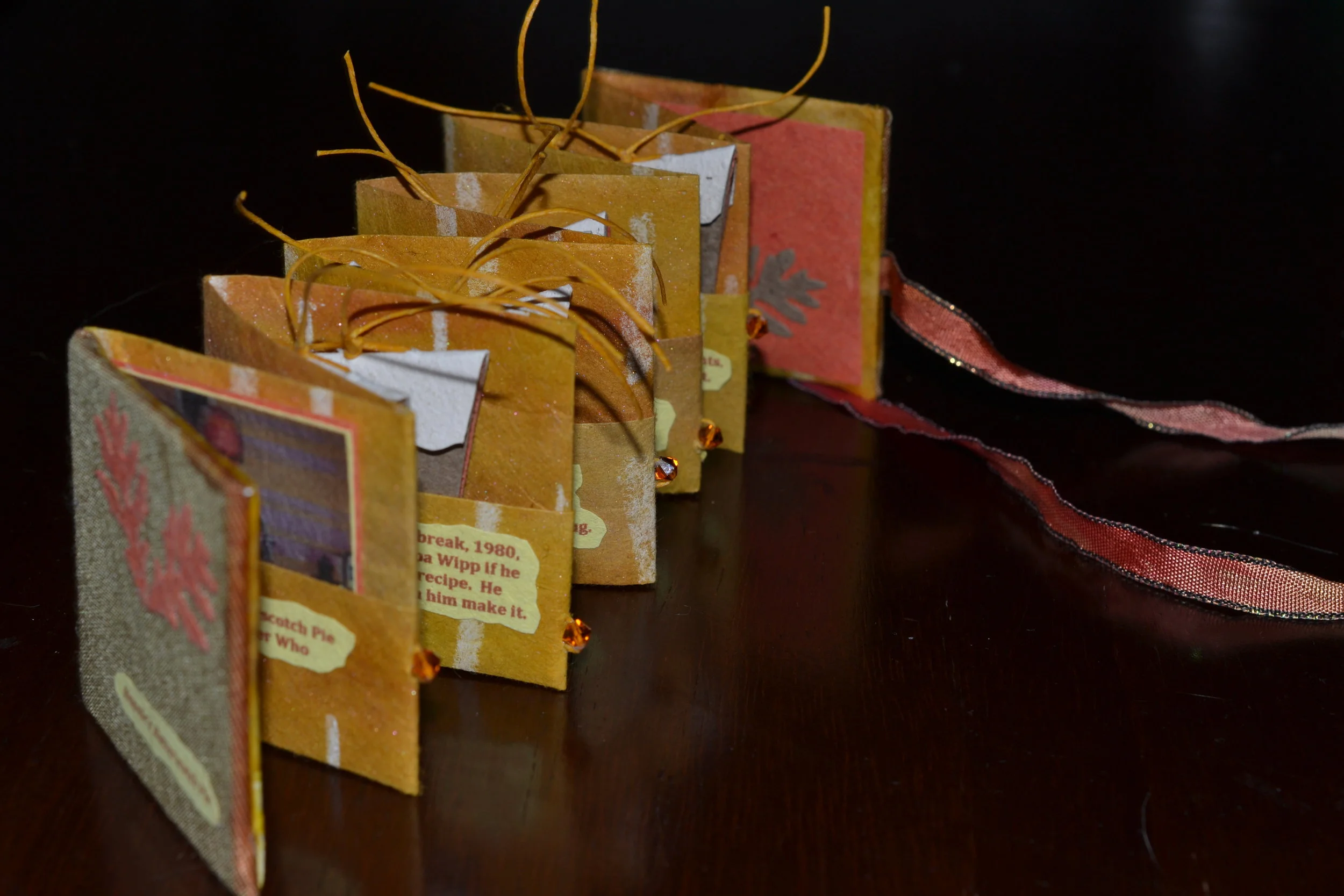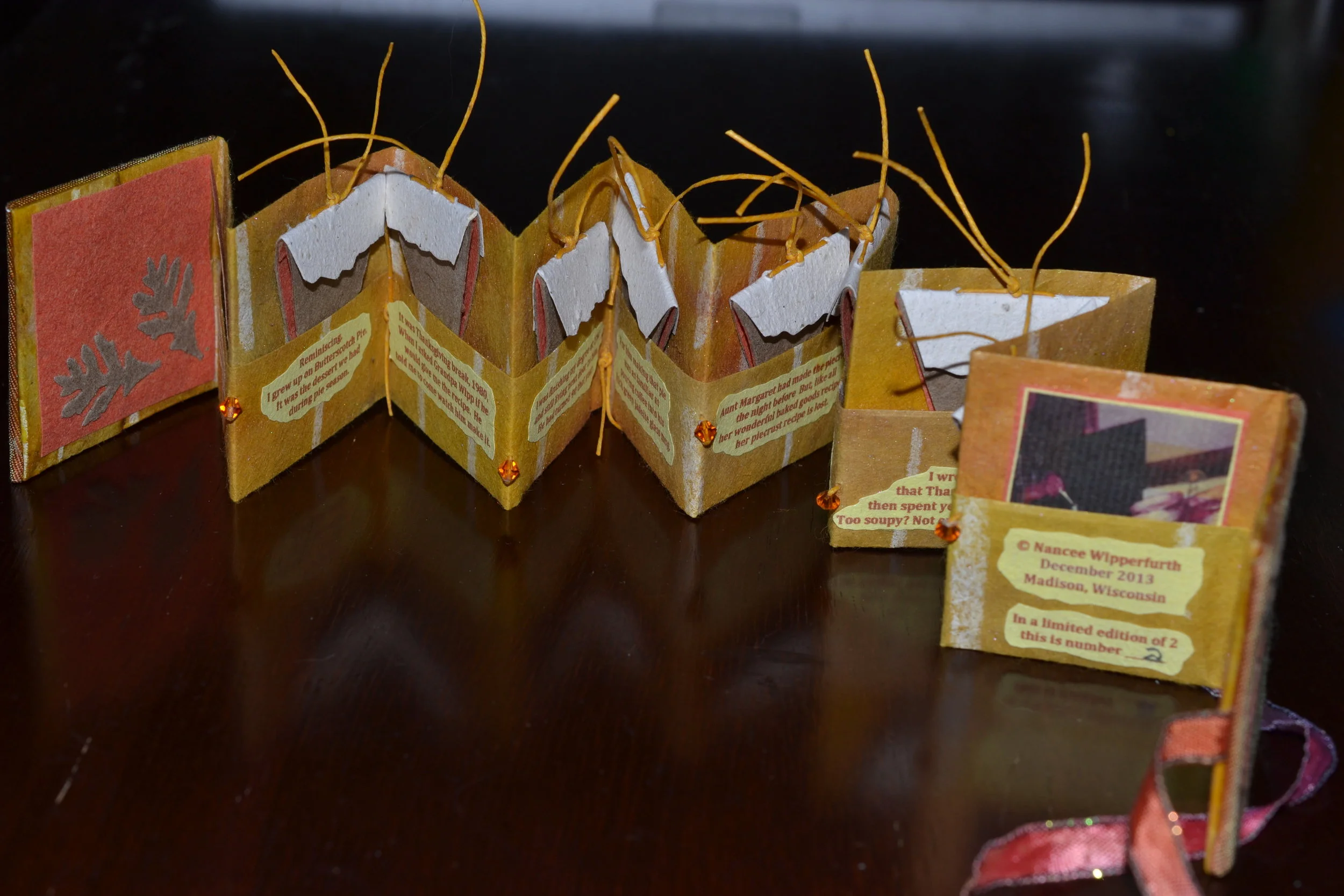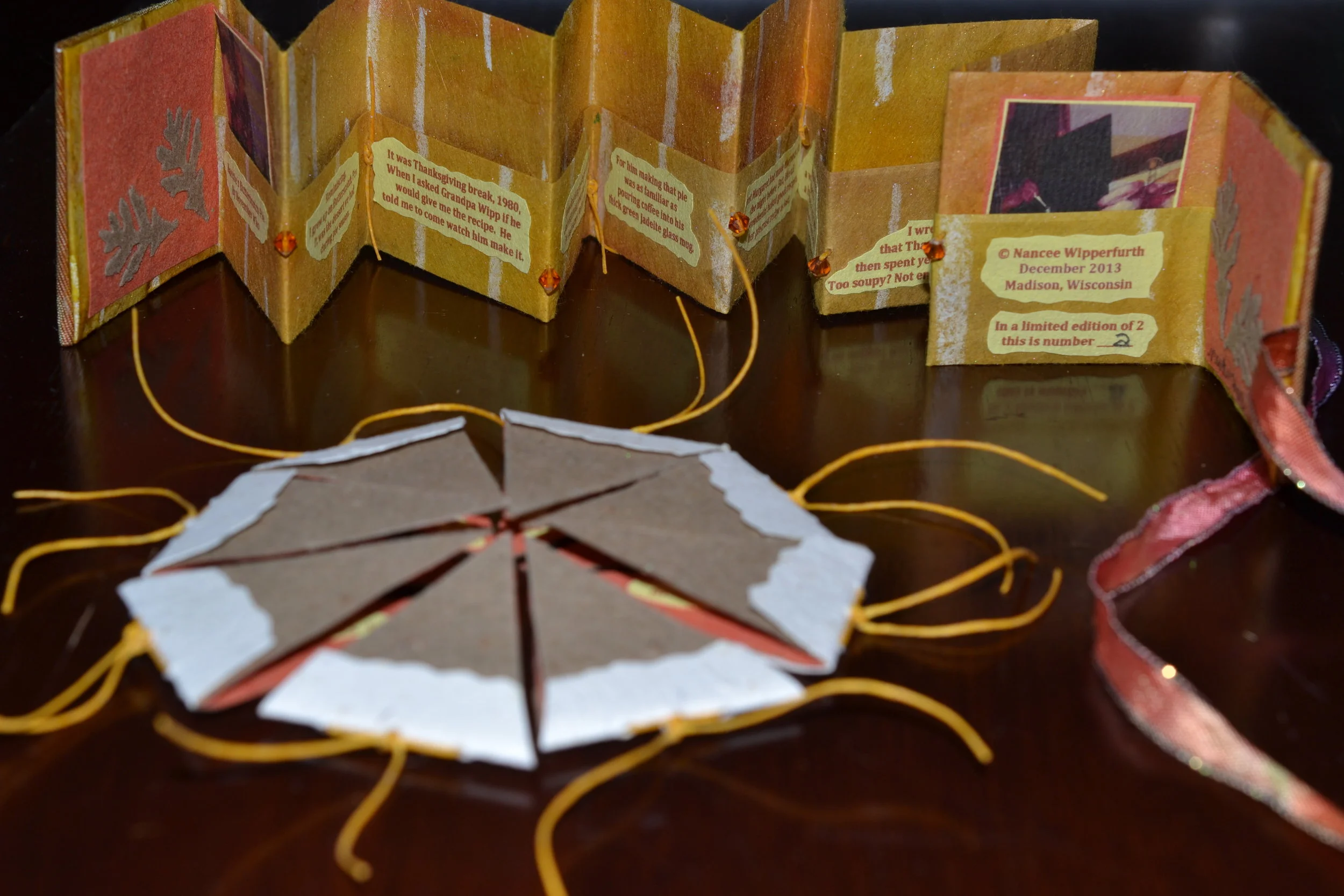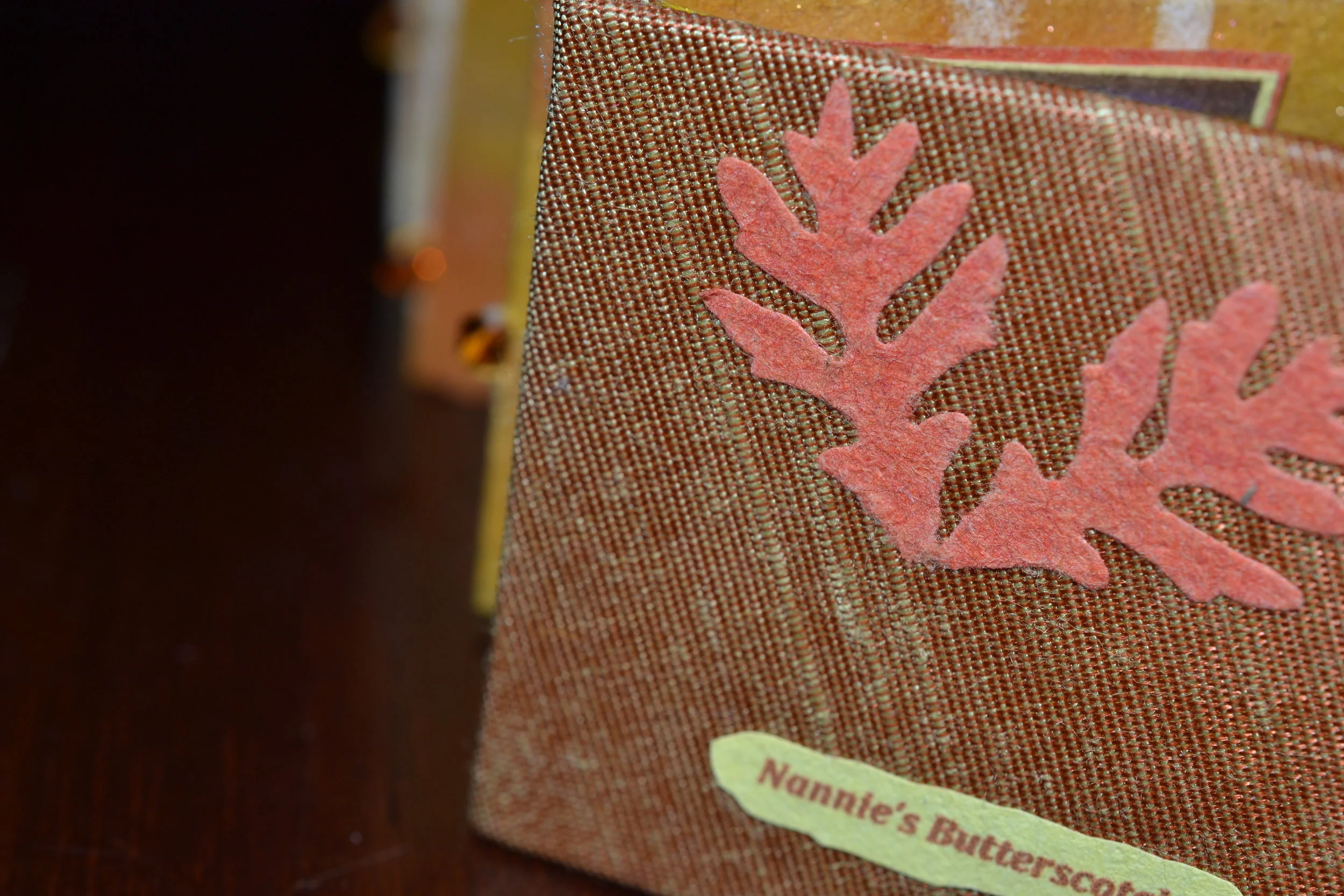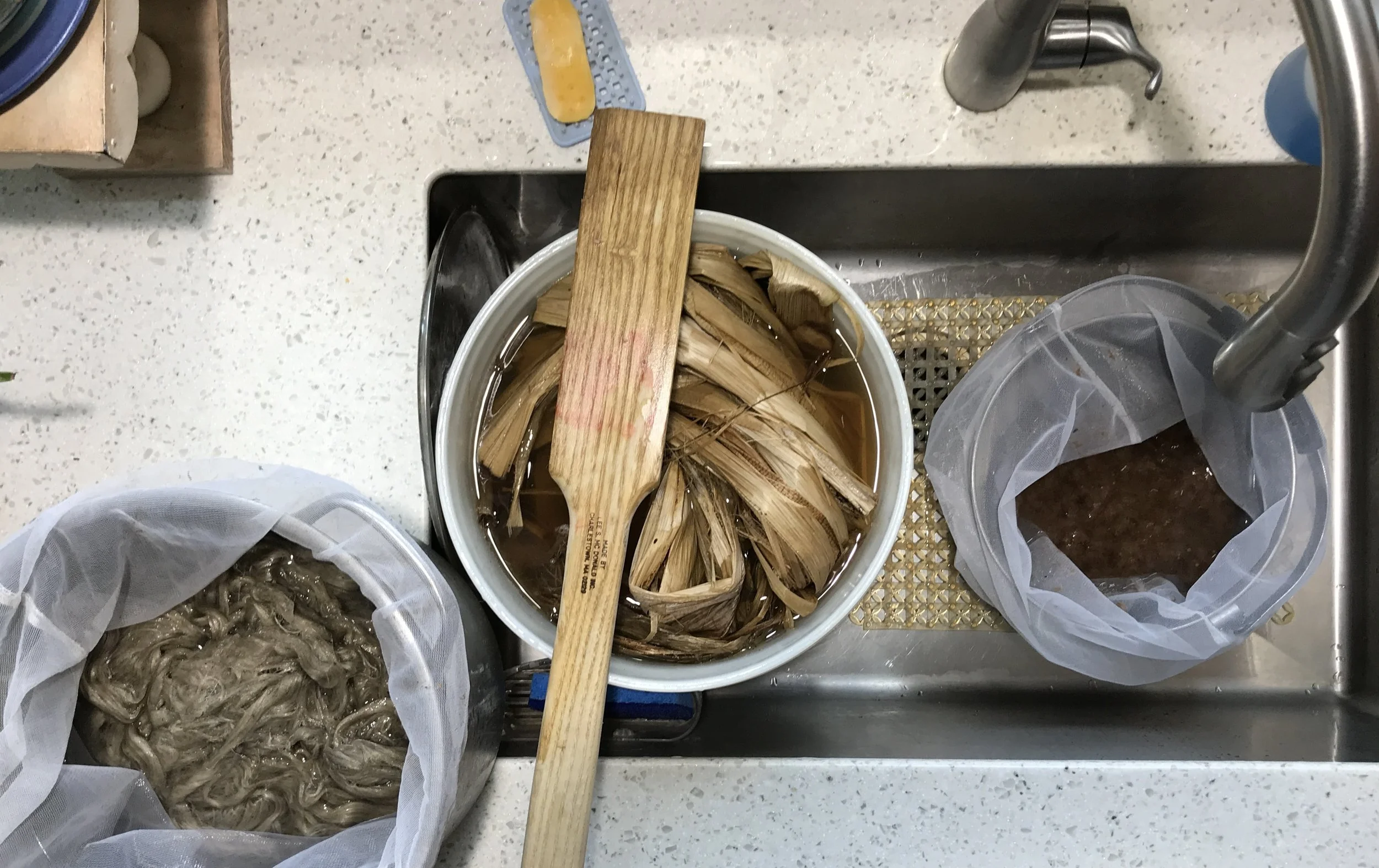Papermaker, Book Artist,
Writer, Educator
I learned the papermaking magic from Walter Hamady at UW-Madison. When I mastered the art of making cotton rag paper and then incorporated it into my books, I felt thatI I finally had full control over form and content-- that lofty objective of every artist book.
“Making paper by hand intrigues me.
It is a simple process really, one that requires only fiber & water, plus the equipment.”
Papermaking
I make paper using cotton rag in a Hollander beater. I have also made paper from many sources of plant fiber: cattail, milk weed sticks, hosta leaves, lily of the valley leaves -- all examples of cellulose. I make pulp paintings, laminated designs, and sheets of paper in many sizes.
Paper Marbling & Paste Papers
I marble paper using gouache paints with original free hand designs; and also with more traditional designs using rakes across the size. Paste Paper is another decorative paper art that involves mixing a paste with acrylic paint, laying it across the surface of the paper, and then making marks in it with utensils of all sorts.
3-D Artwork using handmade paper.
I make vessels using paper mache techniques using scraps of my handmade paper. Some of my art incorporates willow sticks with over-beaten, high shrinking pulp stretched over the form.
The Recipe Story Project
This is a series of twelve 2"x2" books -- one for each month of the year -- celebrating recipes and the stories of how they came into my life. . The book you see here tells the story of how I learned my Grandfather's recipe for butterscotch pie. He made the pie for every Thanksgiving--thus the November selection.
"Love. Anguish. Wonder."
The definition of Art according to Walter Hamady, the iconic Wisconsin papermaker and book artist.
Keeping a Journal
As a kid, I would get frustrated by the commercial "diary" pages with their preconceived dates at the top of the page. Either I'd have less to say and the rest of the page stood blank; or I have run-on sentences that just wouldn't stop. Eventually I purchased blank books and wrote in them. Then, as I found more and more of my handmade paper in single sheets leftover from other book projects, I put them to good use. I made small pamphlet stitched books I could journal in. These days I’m also making art journals that I collage in.
Cooking plant fiber for papermaking.
The strength of paper made with plant fiber depends on the amount of cellulose in that plant. Cotton works so well because it is almost all cellulose; and, because of this, you don’t have to cook the fiber before forming sheets. Some of the plant fiber I have used to make paper are: milkweed, cattail, corn husk, onion skin, daylily, iris, maple leaf, pineapple tops, and kozo.

